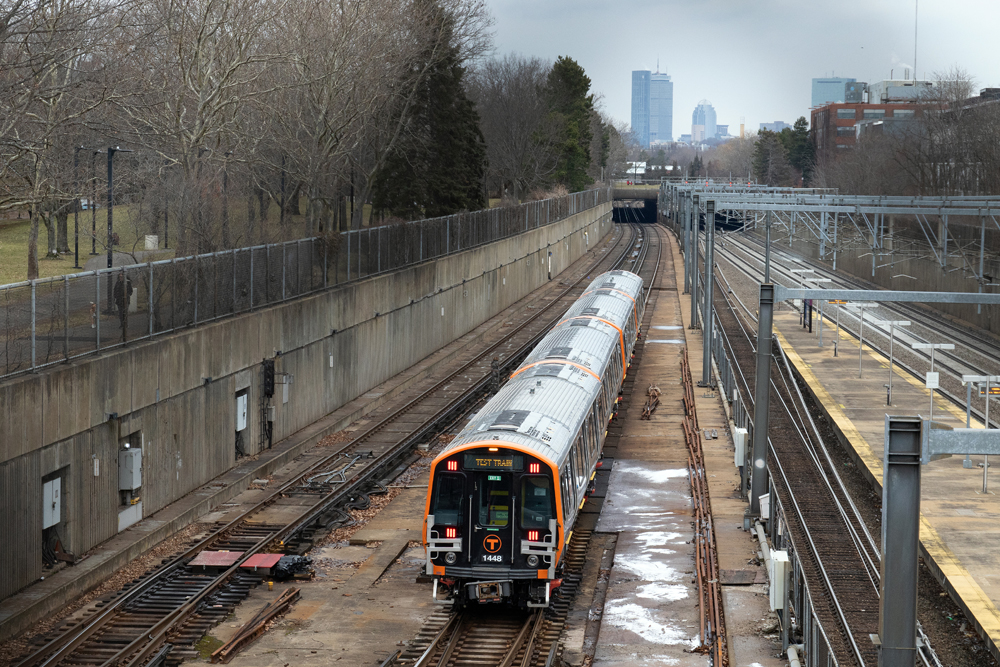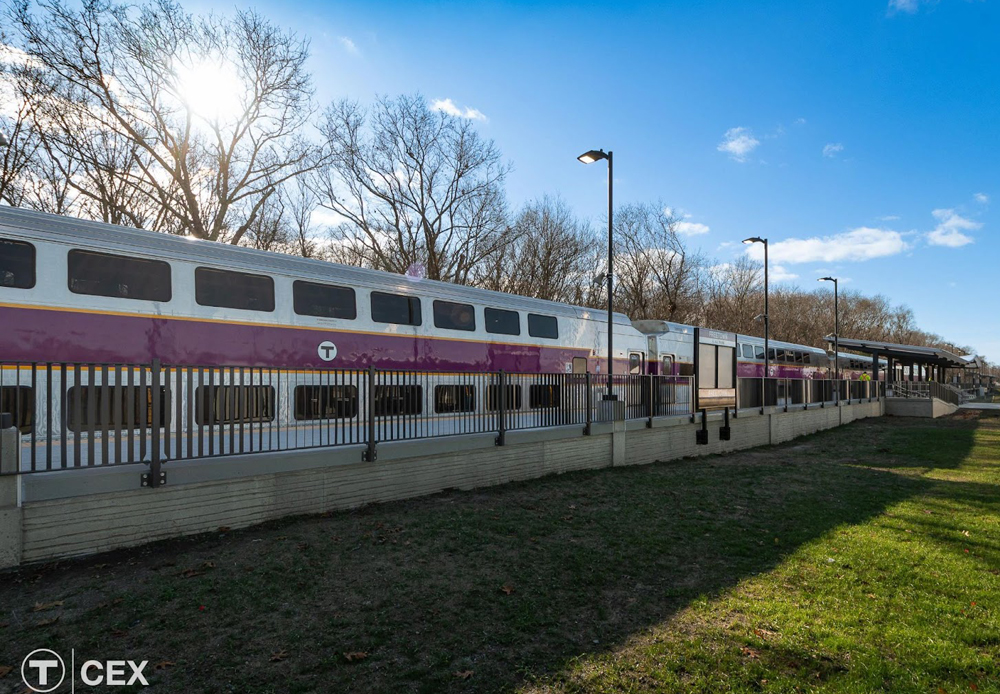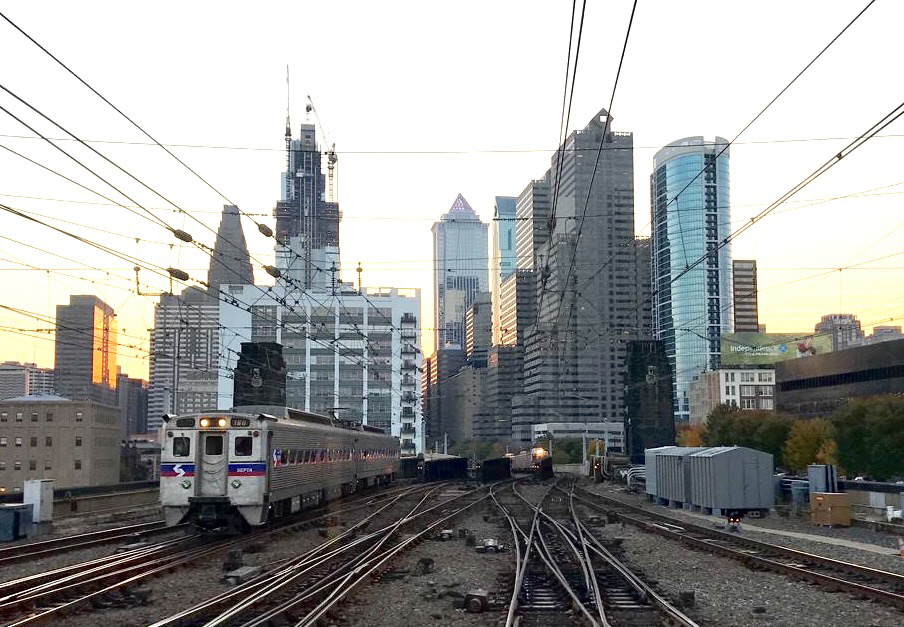“That drives a sales guy like me crazy,” said Roberts, according to a J. B. Hunt-released transcript of his comments at the recent Baird Industrial Global Conference in Chicago.
With 93,000 containers, J. B. Hunt is limited, in part, by the amount of traffic it can put on rail by “the rail system’s ability to handle the incremental volume in a timely and efficient way, says Roberts. “So it depends on whether we see the railroads increase their service capacities and abilities, whether or not we’ll be able to convince our customers to convert their freight off the highway unto the trains.”
Roberts says shifting traffic patterns favor intermodal.
“In the past, we probably put more of that freight into storefronts, and now we probably take more of that freight to fulfillment centers. But it’s all moving in similar quantities. The service and speed are things that continue to put pressure on the need for those intermodal systems to work better.”
And, according to Roberts, “That’s what we’re talking with the rail guys about, the need for the improved service.”
Questions on the transcript are recorded as inaudible.
Based on Roberts’ response, Freightwaves, a freight trade publication, interpreted one question to be a reference the growing implementation of precision scheduled railroading.
“A railroad making itself more efficient and creating more velocity and being able to scale, if that’s part of the outcome, [it] is good. Reliability is the name of the game here,” Robert said. “The short-term: it’s probably going to be a little bit — we use the term: ‘disruptive.’ But I can’t help but think that making their systems run more efficiently should be better in the long run for intermodal.”













I was a driver and fleet manager for JB Hunt, retiring from dispatch in May 2014. I worked in the truck division, but we were always reminded of how many boxes the intermodal folks were putting on trains. We hit a million intermodal loads in October 2010. I think that number is somewhere in the 1.5 million box range now. Any way you shake it, it’s a lot of containers on the train. When I started there as a driver in 1995, they had approximately 7000 48 foot containers, and not quite 10,000 53 footers, a far cry from the 93,000 boxes they have today.
JB Hunt has done a lot to separate the intermodal business from the rest of the operation. Starting in 1999, they made an effort to keep containers on rail loads, and van trailers on road freight. Prior to that, the boxes intermingled, and it was not uncommon for road drivers to run containers in OTR service. In fact, if I were dispatched on something heavy-beer, paper, soup, etc-I would look for a 48 foot container, due to weight and kingpin length advantages over a 53 footer. Once the effort started to keep containers on rail loads and vans on road loads, we were not allowed in most cases to pull containers on road freight. They decided at that time to ramp up the marketing on intermodal, which was growing rapidly.
Someone mentioned unit trains of JB Hunt stacks. When I was driving, I was told we guaranteed BNSF two trains daily out of Chicago, defined as 100 boxes, as well as eastbound from the west coast. The relationship with BNSF was important enough that when JB sited their new Chicago terminal in 1998, it was put in a corner of the Corwith Yard property, and had its own connection directly into the yard. I pulled a lot of boxes off the yard into BNSF that way. I’m sure those were not the only two end points to have that arrangement; I’ve seen our parking areas in Alliance, Argentine, Willow Springs, etc. We send a lot of boxes to all those yards.
BNSF-and NS, their primary partner in the east-makes an effort to run the trains on time. JB stays on top of them, and if a train gets sufficiently delayed, they’ll have the railroad ground the box for it to go over the road. JB Hunt acts as its own IMC, booking the load from shipper to receiver, much as Maersk and Loadsmart are doing. This has been common practice for years. They are well aware that most of the time, the customer doesn’t care that the load goes by rail, as long as the rate is good and the load gets delivered on time. Internally, they manage the freight as well. As a driver, I was always told, “the rail is a customer,” meaning that rail cutoffs were to be seen as a customer appointment. Missing one was considered a service failure to the driver.
One of the things shippers note about JB Hunt is that, as one customer put it, “they have capacity when no one else does.” The fact that John Roberts is turning away freight is not a good sign. Perhaps, as one commenter noted, JB Hunt and others-UPS comes to mind, the only intermodal shipper with more volume-can push and pull the railroads to get their act together on service. But then, as John Kneiling put it, most innovation in the railroad business came from outside.
I will add this: Until intermodal becomes its own “railroad” it will not achieve its full potential. I leave it to those in charge to figure out how to make that happen.
Not too many years ago a wonder chap from HUB explained to me some of the workings of intermodal. I wish I had a recording of that conversation. Basically, the logistics’ companies restrict the amount of space available to shippers to maintain balance and spread availability across the various shippers. It’s a very meticulous game and it is not static, rather, very dynamic. That is what I see in the comments from the story from JB Hunt. Furthermore, railroads are loathe to build infrastructure unless they believe it to be utilized over the long haul; “You don’t build a church just for Easter Sunday.” Then again if you do not build it they will not come.
To the point made below by Mr. McWilliams, there is an important distinction to be made between investors versus asset strippers. Berkshire Hathaway is among the former. Mantle Ridge is…? Stockholders are not the sole parties having an interest in public utilities. There is a legitimate regulatory interest on behalf of the public interest and safety and a customer interest vested in the facilities they purchase to access rail service. A management that ignores the latter two will come to grief at some point. CSX stock repurchases are a red flag for the long term health of the company. See how that one played out at GE, nominally worth 600 billion18 months ago and trading at (?) 100 billion today.
z
I’ll tell you this, Maersk and J.B. Hunt might be able to put a bit of pressure on the railroads, but it’s only going to nudge them a little bit. What is needed is for someone big enough to come along and make the railroads “an offer they can’t refuse”. The only company that I could think of that they absolutely could not tell to f’off would be Wal Mart. If WM got involved and said they were going to start demanding that their merchandise ship by truck or plane only, that would get some attention at the corporate offices. Just the threat could make miracles happen as far as R.R. on time performance in intermodal is concerned.
Is there a real possibility that the customers lock-arms and starve the railroads until they abandon customer-unfriendly aspects of PSR? Throwing away customers via PSR is not a viable long-term business strategy.
Herb, to your point, there’s been a lot of consolidation in the steamship industry. That creates a lot of big customers who aren’t going to accept nonsense from the railroads. The way thousands of their small customers have to.
I’ve said this before about railroads: “Railroads are a service industry.” If you do not provide service, customers will go elsewhere. Think of railroads as big box retailers like Montgomery Wards and Sears. Think of trucking companies like Amazon. Amazon provides a service that is easy to use. Sears? Well, you have to drive in to the nearest store and look for a sales associate, if one can be found. Railroads need to shift from O.R. to a customer satisfaction basis. Have you ever seen a customer satisfaction metric posted for a railroad?
there is no excuse for failure today. Service generates both growth and business security. Ask Warren Buffet.
I would recommend anyone interested in this topic read pg B7 of Wed, 10-7 WSJ. Maersk ocean shipping is teaming with Loadsmart, a new logistics broker, to provide seamless door to door shipping, warehousing and transloading. The service will initially target primarily coastal destinations, but if it succeeds, penetration to the interior seems inevitable. If rail carriers refuse to play ball on Maersk’s terms,, they stand to lose a substantial portion of their international traffic. The models needed are operating on the Florida East Coast, Panama Railroad and European operations in the UK, Netherlands and Germany. The days of the PSR crew and its mantra of “We’ll get it there at our convenience” are numbered. Between J.B. Hunt pushing from inside and Maersk pulling on the outside, the rail scene may see some radical changes. If rail carriers could operate an at best break-even system 60 years ago that nctually kept schedules
And it is likely the point made remains JB Hunt’s interest in economies of scale, given what are already basically unit trains of Hunt stackers, an impressive sight.
Sounds like they are more interested in Wall St. as opposed to customers.
So who do railroads want to please? Their investors or their customers?
Mr.McWilliams; a business with unhappy customers is a business going out of business. You can line up all the capital you want but, without customers there is no business in which to invest.
Not at all surprised to read this.
Mr. McWilliams: 60 years ago, unhappy customers stripped the railroads of their traffic. All the while the investors embraced a false sense of security through ill disbursement of dividends. And we all know how that ended.
Question is, who owns the railroads, investors, or customers? I say unhappy owners is more detrimental than the customers not not being happy. Any investment is no different than a job. If you’re not happy with the wages you’re paid you’re not going to do the job. If investors aren’t happy with their return on investment they’ll put their money elsewhere.
Mind you investors would need to make sure the operation they’ve invested in is being operated as effectively as possible, but if they’re not making money then there is no reason to continue the investment.